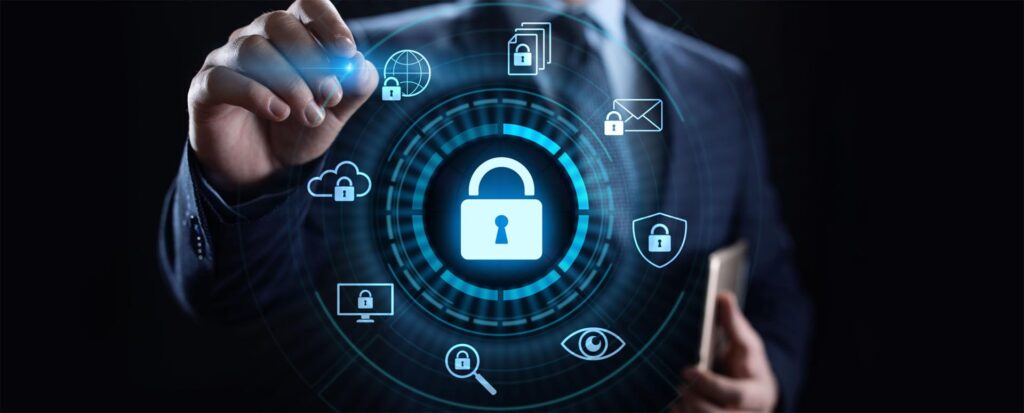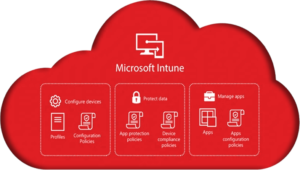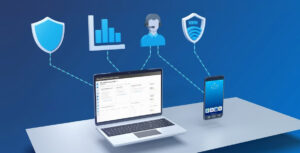Here we are into 2023– with the first three months already gone! Looking at the situation of cybersecurity so far, the increasing dependency on technology, coupled with the prevalence of cloud computing and online infrastructure, we can say that cybersecurity needs more resources, investment, and innovation. From sensitive data thefts to ransomware attacks to phishing, the beginning of 2023 has been catastrophic for online businesses.
Here are some of the key developments and trends in cybersecurity so far in 2023 that you may find interesting.

Ransomware On the Rise: An Alarming Trend
One of the most alarming developments so far in 2023 has been the surge in ransomware attacks. Ransomware attacks happen when attackers gain unauthorized access to an organization’s network, and then encrypt their data or systems, demanding money in return for the decryption key. In most cases, organizations pay this ransom to get their data back, but this only encourages the attackers to continue their activities.
The real point of worry is, cybercriminals are now using more sophisticated tactics, incorporating social engineering techniques alongside advanced malware to penetrate systems and encrypt sensitive information. Already, the impact of these attacks has been massive, causing significant financial loss and reputational damage to organizations.
More so, the continuing upsurge of cryptocurrencies has made it simpler for hackers to demand and collect payments for their malicious actions. According to the 2023 SonicWALL Report, ransomware attacks have risen by a staggering 57% in the first quarter of the year compared to the same period last year. A few high-profile ransomware attacks in 2023 have targeted, in particular, government bodies, healthcare agencies, and fintech companies.
The crux of the situation is, organizations need robust security protocols, employee training on cybersecurity awareness, and regular vulnerability assessments. Also, it’s crucial to have a backup and recovery plan in place to minimize the damage in case of an attack.
Our cybersecurity experts at WME never take these issues lightly for any of our clients. Ultimately, we make sure your networks and data are safe.
IoT Devices: The Hottest Gateway to Cyberattacks
The adoption of the internet of things (IoT) is just unstoppable. From smart watches to kitchen appliances, IoT devices bring ease to our lives, so they are everywhere. However, with this fast penetration, the risk of cybercrimes and uncompromised data has just multiplied.
In the first place, IoT devices are not designed with security in mind. On top of that, they are always connected to the internet and trying to access sensitive data. This combination of factors makes them vulnerable to cyberattacks because of their weak security protocols, lack of firmware updates, and insufficient authentication mechanisms.
Also, IoT device networks are attracting a plethora of DDoS attacks which are extremely undesirable as even administrators cannot always control which devices connect to their network. Remote monitoring, however, provides an avenue for Managed Service Providers (MSPs) to supervise and control IoT systems, allowing protective interventions when needed. For example, they can remotely install new software to devices to observe the device behavior for performance analysis or security loopholes diagnostics.
But IoT-led crimes are definitely on the rise. Even in the first three months of 2023, we have already witnessed several cyberattacks targeting IoT devices, leading to some huge financial losses and reputational damage to organizations. So, it’s become crucial for organizations to take proactive measures to secure their IoT devices, such as changing default passwords, updating firmware regularly, and configuring devices to use secure connections.
Zero Trust Security Architecture: Why It Should Be A Priority
Zero-trust security architecture might be a new concept for cybersecurity enthusiasts but not for avid readers. The idea of this approach to cybersecurity is to consider that all devices and users connected to a network may have been compromised and therefore, it’s necessary to regularly verify their identity and security status before granting access to data.
In fact, this model promotes a new perspective on security. The zero-trust approach to security:
- Reduces the risk of data breaches.
- Provides granular access controls.
- Minimizes lateral movement within networks.
- Improved password policies.
- Increases visibility into network activity.
- Simplifies compliance with industry regulations.
- Enables secure remote access for users.
- Supports the adoption of cloud-based applications and services.
- Enhances the overall security posture of an organization.
The zero-trust approach is imperative now. We are already seeing employees at multiple organizations falling victim to phishing attacks, leading to serious reputation loss for companies. The security challenge is so severe that it’s become critical to always verify even your employees and their credentials. Only this way, phishing attempts can be prevented beforehand.
The Growing Importance of Cybersecurity in Healthcare
Of all the sectors, the healthcare sector is at staggering risk of cyber-attacks in 2023, with data breaches and ransomware attacks topping the chart. Again, the biggest culprit here is the rising number of IoT devices being used in healthcare facilities. Hackers are targeting patients’ private data including phone numbers, date of birth, Identity details, social security numbers, and whatnot by exploiting these compromised devices.
The rise in telemedicine services and online consultations has also shown cybercriminals new pathways to exploit. Already, surveys reveal there has been a 49% increase in ransomware attacks in the Healthcare industry in 2023 so far compared to the same period last year.
Phishing attacks are also on a rise with email phishing being the most common type. These emails usually look convincing and talk with reference to a commonly feared medical condition to lure you into clicking the link. Just recently, they even faked emails from World Health Organization
On top of these hardcore security challenges, the healthcare sector is struggling with the shortage of cybersecurity professionals and inadequate investment in cybersecurity infrastructure. This situation makes it easy for hackers to infiltrate vulnerable systems and access sensitive patient information.
To mitigate the risk of cyber-attacks, the healthcare industry must invest in cybersecurity resources and prioritize the protection of patient data. This includes implementing multi-factor authentication, regular vulnerability assessments, and continuous employee training on cybersecurity best practices. That said, healthcare organizations should establish incident response plans to quickly identify and contain potential cyber threats. Already, the ongoing emphasis on the zero-trust security approach and the rise in cybersecurity investment within the healthcare sector shows the urgency of staying alert against cyber-attacks.
As the year progresses, healthcare decision-makers can get in touch with WME experts to keep track of cybersecurity patterns and adjust accordingly to cope with the evolving threat environment.
The Final Story
The 2023 cyber risk is subtle, it requires a more powerful and unified response from the solution makers. Hackers are finding new ways to attack, and your IT security teams can’t afford to continue depending on obsolete techniques to keep your crucial data safe and secure. There can be multiple ways organizations can counter the increasing emergence of cyber risks. They can:
- Encourage employees to contribute to the company’s security measures.
- Regularly update software patches.
- Control and restrict unnecessary access.
- Implement two-factor authentication.
Follow best security practices.
For more information, visit:
O365 Security & Compliance Services - (windowsmanagementexperts.com)






